JIM FOWLER'S BOOKS
Amazon.com Author page
|
|
Order
From
Amazon.com
|
|
|
|
|
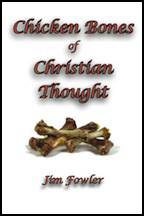
|
CHICKEN BONES
OF CHRISTIAN THOUGHT
Eight topics within Christian thought that are difficult, if not impossible, to understand by using natural human reason alone. Like chicken bones, these are hard to swallow, and often cause people to choke.
|
|
 |
|
|
|
|
 |
CHRIST AT WORK
IN YOU
Many who call themselves “Christians” seem to be oblivious to and unconcerned about the fact that the character of their behavior is selfishly misrepresentative of Jesus Christ, and fails to manifest the “fruit of the Spirit.” |
|

|
|
|
|
|
 |
CHRISTIANITY IS
NOT RELIGION
Jim Fowler explains that Christianity is not a book-religion, not a belief-system, not morality, not role-playing, not social problem-solving, not an ideological option, and not an ...ism, before concluding that Christianity IS Christ.
|
|

|
|
|
|
|
|
CHRISTMAS:
IT'S HISTORY
AND MEANING
Jim Fowler considers the historical background of Jesus’ incarnation, the theological implications of “the Word became flesh,” the cultural origins of modern Christmas celebrations, and the personal, spiritual intents of Jesus’ birth and life. |
|

|
|
|
|
|
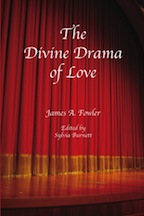
|
THE DIVINE
DRAMA OF LOVE
Jim Fowler has cast the entire Christian message into a dramatic form with seven acts, progressing from eternity-past to eternity-future. |
|

|
|
|
|
|
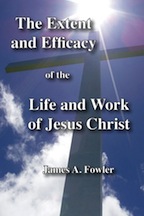
|
THE EXTENT
AND EFFICACY
OF THE LIFE
AND WORK
OF JESUS CHRIST
The extent and efficacy of the life and work of Jesus Christ is best viewed in the context of a balanced tension of a both/and dialectic.
|
|

|
|
|
|
|
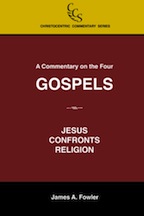 |
A COMMENTARY
ON THE
FOUR GOSPELS
This generalized commentary on the four gospel-records of Matthew, Mark, Luke and John in harmony is an attempt to see the “big picture” of the radically new “good news” that Jesus introduced as inherent within Himself. |
|

|
|
|
|
|
 |
A COMMENTARY
ON THE EPISTLE
TO THE GALATIANS
Jim Fowler believes that “Galatianism” is pervasive and prevalent in the churches today, as religious legalists have duped Christians with the proclamation of “how-to” Christian religion in prescribed procedures, formulas, techniques and duties. |
|

|
|
|
|
|
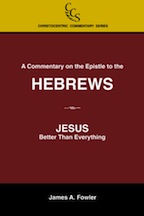
|
A COMMENTARY
ON THE EPISTLE
TO THE HEBREWS
The Epistle to the Hebrews has long suffered from anonymity. Jim Fowler concludes that the evidence overwhelming points to the traditional explanation of the Apostle Paul writing from Rome to the Hebrew Christians in Jerusalem. |
|

|
|
|
|
|
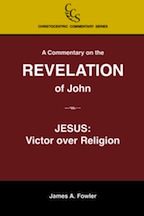 |
A COMMENTARY
ON THE
REVELATION OF JOHN
Jim Fowler regards the antagonist and adversary of the risen Lord Jesus throughout the imagery of Revelation to be Satan's enterprise of "religion." |
|

|
|
|
|
|
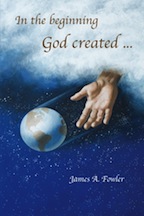 |
IN THE BEGINNING
GOD CREATED
In chapters entitled: • The Etiology of Creation • The Chronology of Creation • Creation and Evolution • The Contingency of Creation • The Teleology of Creation, Fowler attempts to maintain a balance between the natural and supernatural processes of the earth’s origins. |
|

|
|
|
|
 |
MAN AS
GOD INTENDED
Jim Fowler provides an overview of Biblical Theology from an anthropological perspective, asking basic questions that every person must answer in order to provide meaning and purpose in life. |
|
 |
|
 |
|
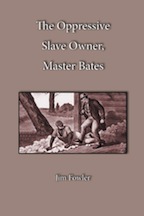 |
THE OPPRESSIVE
SLAVE OWNER,
MASTER BATES
A study of human sexual masturbation from a Christian perspective, considering the issues to be pondered by a Christian individual. |
|
 |
|
 |
|
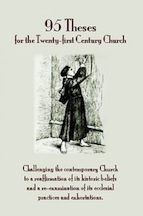 |
NINETY-FIVE THESES
FOR THE
TWENTY-FIRST
CENTURY CHURCH
It has been almost five
hundred years since Martin
Luther posted his ninety-
theses on the Wittenberg
Cathedral door. Jim Fowler
provides a contemporary
list of challenging theses.
|
|

|
|
 |
|
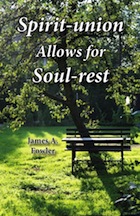 |
SPIRIT-UNION
ALLOWS FOR
SOUL-REST
People are seeking “rest,”
but are looking in all the wrong places. True “rest”
can only be found in “union with Christ.” |
|
 |
|
 |
|
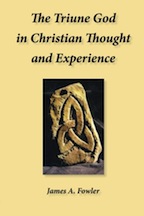 |
THE TRIUNE GOD
IN CHRISTIAN THOUGHT
AND EXPERIENCE
The Trinity has been both confusing and controversial. This is due to early Christian thinkers developing their thought on Greek philosophy rather than on the revelation of God in Jesus Christ. |
|
 |
|
 |
|
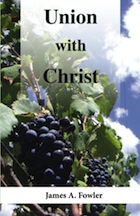 |
UNION WITH CHRIST
Early Christian writers used the Latin phrase, unio cum Christo, meaning “union with Christ.” It is important that Christians of our day understand what “union with Christ” really means. |
|
 |
|
 |
|
 |
WHAT'S THAT
IN YOUR HAND?
When Moses was working for his father-in-law, Jethro, leading sheep around the desert-wilderness, he turned aside to see a burning bush. God spoke to him from the burning bush, and asked, "What's that in your hand?" |
|
 |
|
 |
|
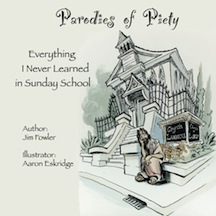 |
PARODIES
OF PIETY
"Everything I never learned
in Sunday School"
These humorous parodies force contemporary Christians to engage in self-examination and self-criticism of some of their practices, to understand the spiritual reality of the Christian gospel. |
|
 |
|
 |
|
 |
FREQUENTLY
ASKED
QUESTIONS
After approximately forty years of teaching ministry, Jim Fowler looks back at the "frequently asked questions" concerning his teaching. These were presented in a question and answer format. |
|
 |
|
 |
|
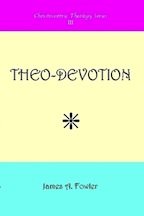 |
THEO-DEVOTION
A study of the theological implications of "Christocentric Prayer" and "Christocentric Worship." |
|

|
|
 |
|
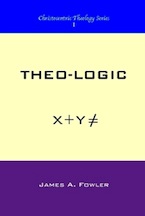 |
THEO-LOGIC
Seven syllogisms that are foundational to Christian thought are exposed as invalid when considered by natural human logic but thoroughly valid within the revelation of Theo-logic. |
|
 |
|
 |
|
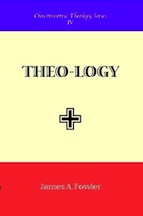 |
THEO-LOGY
Considers two theological systems in evangelical Christian theology – Covenant theology and Dispensational theology – and then proposes a third alternative theological perspective – Christocentric theology. |
|
 |
|
 |
|
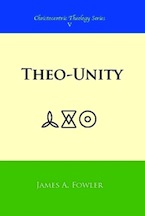 |
THEO-UNITY
Three divine onenesses central to the Christian faith – the Trinitarian oneness of Father, Son and Holy Spirit in one divine Being, the oneness of deity and humanity in the one Person of Jesus Christ, and the oneness of Christ and the Christian in one spirit. |
|
 |
|
 |
|
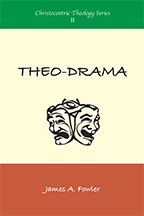 |
THEO-DRAMA
Fowler casts the entirety of the biblical narrative into a seven act drama commencing in eternity-past and proceeding to eternity-future. The text is the same as the publication entitled, "The Divine Drama of Love." |
|
 |
|
 |
|
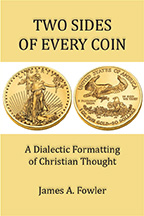 |
TWO SIDES
OF EVERY COIN
A dialectic formatting
of Christian thought.
After explaining his use
of dialectic, Jim Fowler
uses one hundred thirty
charts to show the two
sides of different doctrinal
and practical issues.
|
|
 |
|
 |
|
|


















